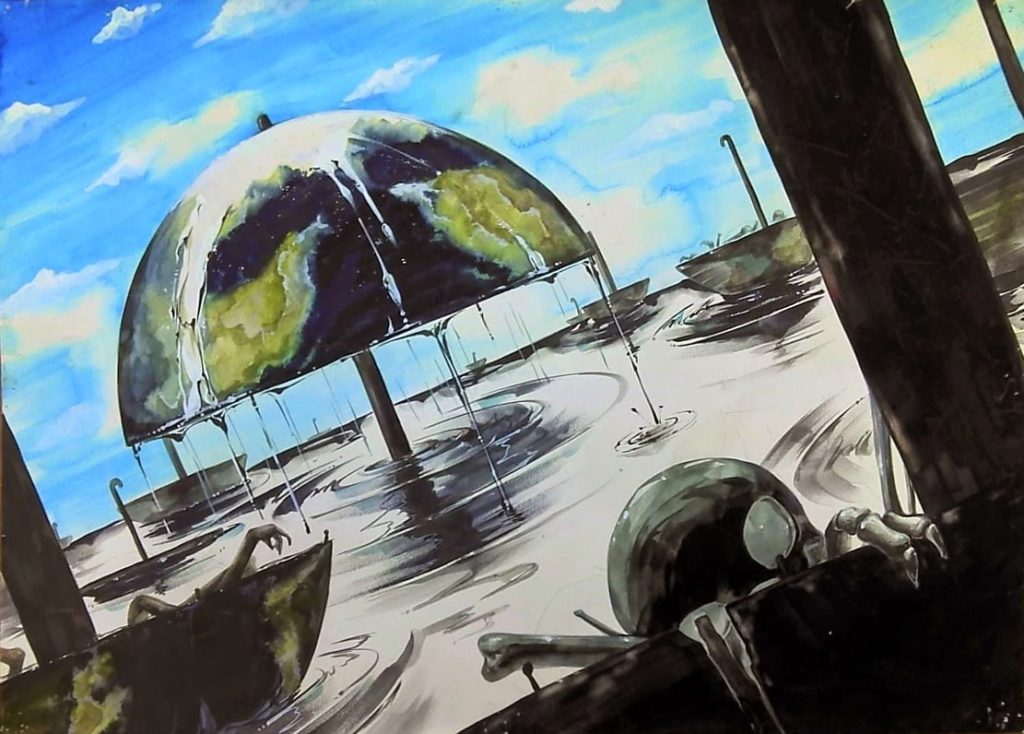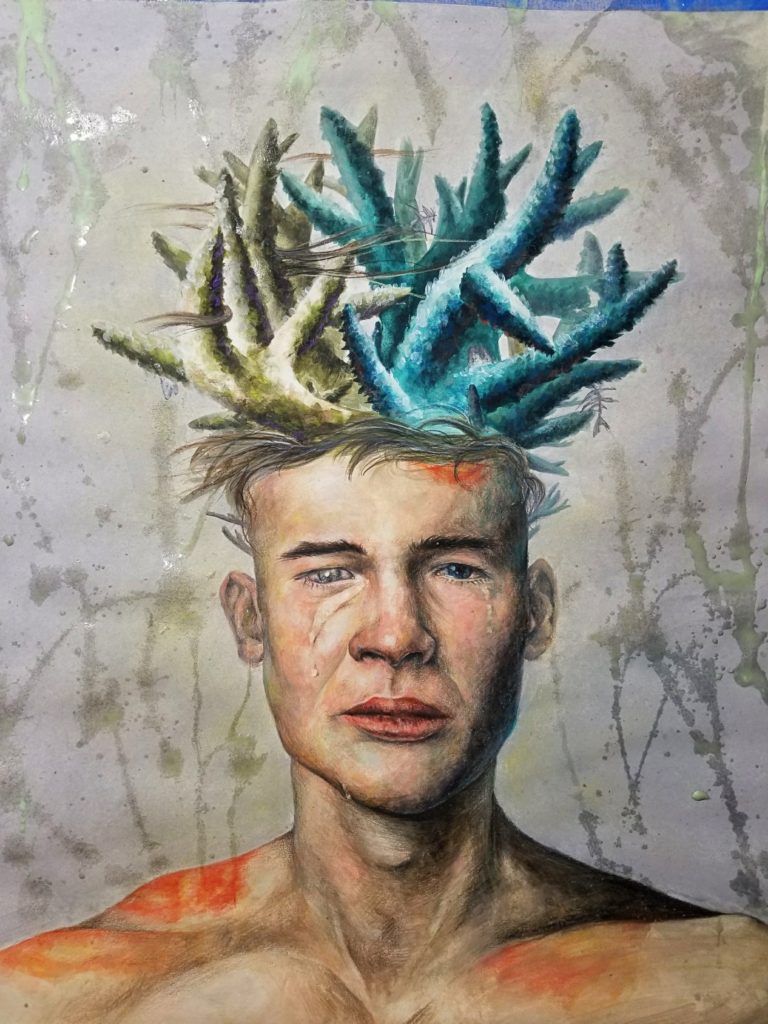

Global Warming By Sangmin Lee, 2017 
By Sangmin Lee, December 2017, Ocean, sea, beach…
GLOBAL WARMING by Sangmin Lee. Undoubtedly, our planet’s temperature keeps rising; icebergs melting, massive storms occurring more often, the number of wildfires is increasing, and the heat waves are becoming a part of our weather. These environmental changes affect negatively to all living creatures on Earth, including humans. If we don’t significantly reduce the heat, our plant will have a massive collapse.
As a result of this fact, I have expressed my anxiety about the future environment aggressively through painting; using dynamic angles. In which I caused a flood from a melting umbrella, that figuratively showed our planet, earth, and fossils, including human fossils, that floated around the flooded area.
Ocean, sea, beach… By Sangmin Lee. Sea creatures have been one of my inspirations. I am still amazed by their colors, shapes, and how they interact with each other. Unfortunately, I may not be able to see them anymore in 5 years time because coral bleaching is a serious risk. Corals are also animals, which means they can feel pain like we do.
To express this message, I have depicted a coral bleaching event showing a person suffering with burns, and created a head with corals that show the bleaching process.
SUMMER 2018 CHEM 275
The Effects of Ocean Acidification on Montepora capricornus. Cruz-talavera, E.
FALL 2018 ENVS 295
Effects of Trapezioidea crabs on coral growth in a predation free environment. Dolecki, S.
Can Virtual Reality Technology be used to Effectively Educate the Public about Ocean Conservation? Fernstrom, M.
Sea Star Wasting Disease and External Stress. Korf, G.
The Effect of Geographic Region of Oxalotrophic Rhizosphere Bacteria on Efficiency of Calcium Carbonate Precipitation. Roy, K.
WINTER 2018 ENVS 295
Sixgill Sharks, F. Mckinlay
You may associate most sharks with the tropical waters of Australia or Florida, but the Puget Sound is frequently visited by ten species of sharks. You’ll see that the infamous Great White shark does visit from time to time, but the bluntnose sixgill, broadnose sevengill, spiny dogfish, and brown catshark all call our home their home.
Or is it the other way around?
The sixgill shark is something of a living fossil. What makes sixgills unique–their six gills!–along with their translucent eyelid and positioning of the dorsal fin give it more in common with prehistoric members of the Hexanchidae family than with their living relatives. We’re talking all the way back to the Triassic. They could have been part of Jurassic Park.
Sixgills are benthic, which means they spend most of their time on the sea-floor, though they have been seen to come up to the surface in the night time.

Sixgills are an elusive, deep-dwelling species that can be found all over the world, including some of the more tropical climates of Florida and Australia (as mentioned above). But juvenile and subadults sharks are encountered Elliot Bay, right off the Pier downtown. In fact, the next time you’re walking along the boardwalk you may be just a few feet away from one of our local sharks.
While sixgills may be the largest shark to reside in the Sound, the largest shark encountered in our waters is the Basking Shark, one of the world’s largest shark species. A 25-foot basking shark was spotted by a 19 year-old in a fishing boat back in 2014.
But this isn’t the next installment of the Jaws series. As of 2014, of the nearly 500 species of shark, 74 are listed as “threatened”. Sixgills are considered “near threatened”, but with so little data on them, it’s difficult the fully assess the sustainability and resiliency of the species. The only way we’ll learn more is to continue to promote research and engage the community to learn about our underwater neighbors.
Resources:
Graphic courtesy of The Nature Conservancy in Washington
Sixgill shark photo courtesy of KCS9 and the Seattle Aquarium
Waxworms Eating Plastic. Dorgan, J.
And Work Coming Soon!
I. Danilyuk, J. Faunce, L. Liedermann,


